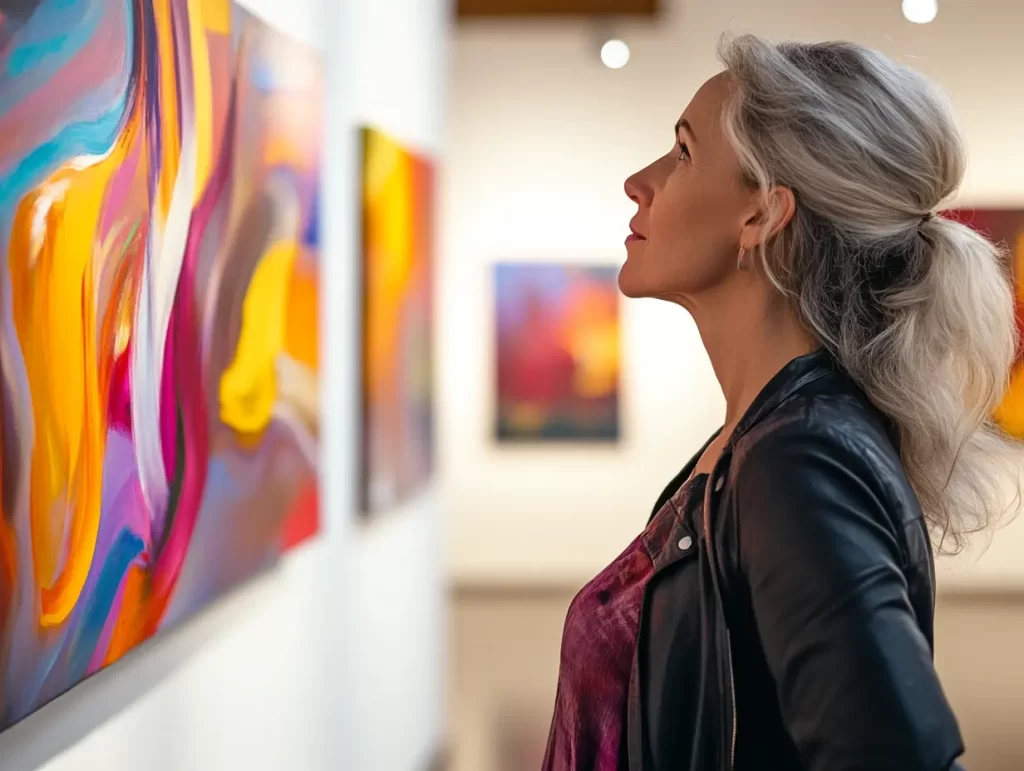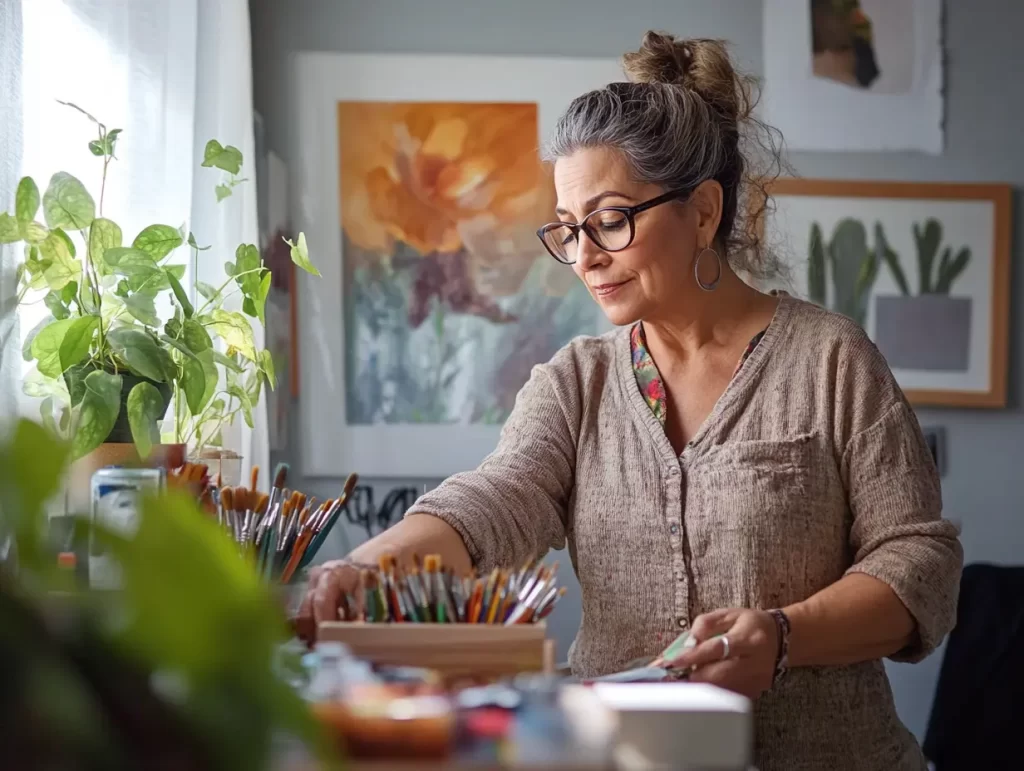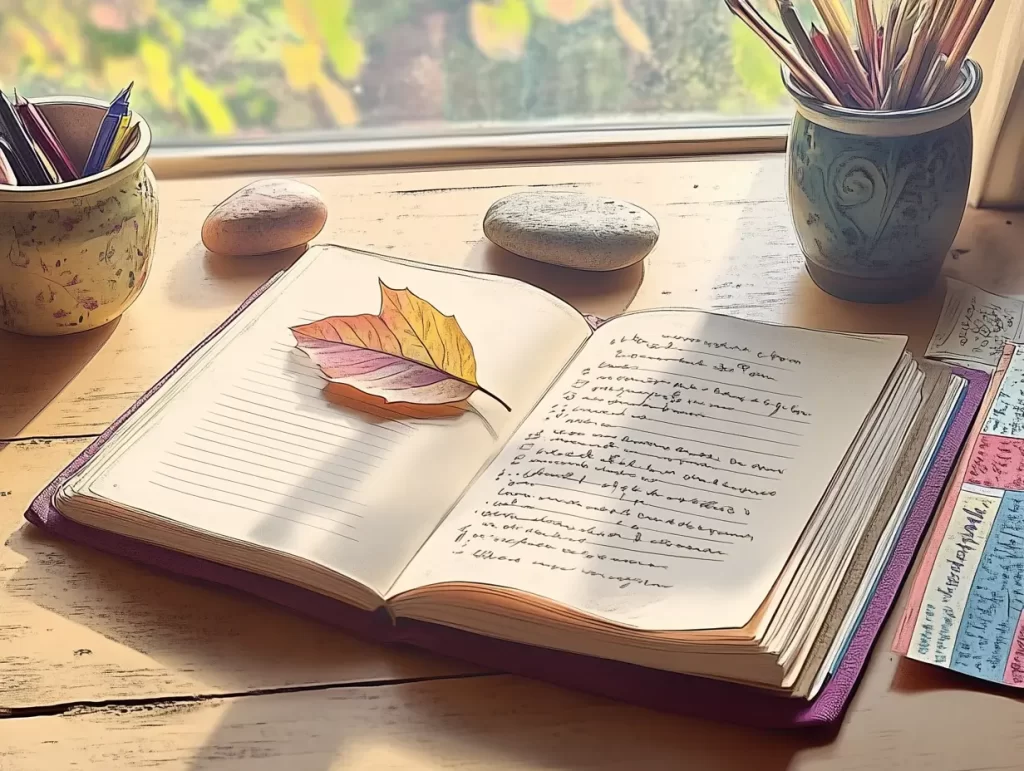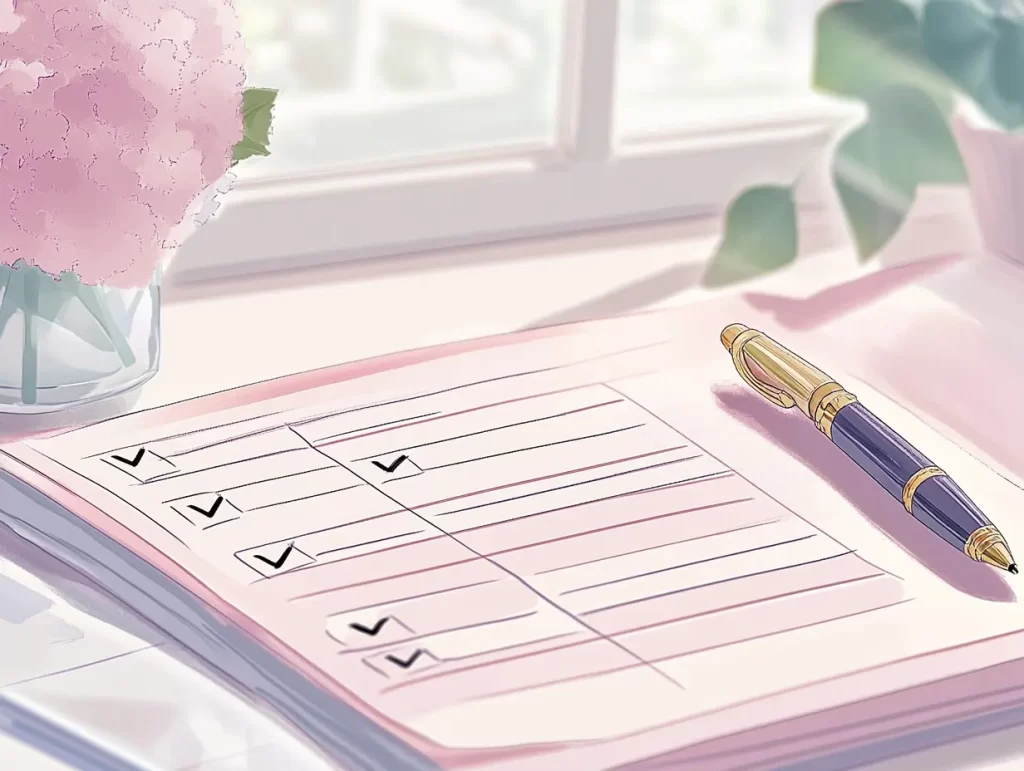Rediscovering Your Creative Voice
A New Chapter for Empty Nesters
The silence left behind when children move out can be both a gift and a challenge. It’s a time when life slows just enough for you to hear your own thoughts again — and sometimes, that quiet uncovers questions you didn’t realize you were asking. Who am I now? What’s next? Rediscovering your creative voice isn’t just about finding a hobby; it’s about reconnecting with the part of you that’s been waiting for its turn to speak.
Your journey forward doesn’t have to feel uncertain or overwhelming. As the famous proverb says, “How do you eat an elephant? One bite at a time.”
The Reality Check
It’s not always easy to confront the silence that fills your home once it’s empty. The space that used to buzz with activity now feels still, and that stillness can echo with more than just quiet — it can bring doubts, fears, and unmet expectations to the surface. This is the moment for a reality check, not as a way to critique yourself but as a chance to acknowledge where you stand right now and where you want to go. Rediscovering your creative voice starts with honesty, even if it feels uncomfortable at first.
Letting Go of the “Shoulds”

How often have you caught yourself thinking, “I should have it all figured out by now”? Those “shoulds” can weigh heavy, dragging you down when you’re already vulnerable. However, they’re not truths — they’re stories you’ve picked up over time. Stripping away those layers of self-imposed expectations helps you see more clearly. It’s not about what you should be doing; it’s about what genuinely excites and inspires you.
Take a moment to list the things you’ve always wanted to try but shelved because life was too busy. That abandoned art set in the closet? The dusty yoga mat in the corner? They’re not just objects; they’re invitations.
Quiet Doesn’t Mean Empty
For many of us, the quiet after a bustling home life can feel like a void. But silence is not inherently negative. Think of it like a blank canvas. At first, the expanse may seem intimidating — what do you do with all that space? Yet, this quiet can also be fertile ground for new ideas, unexplored passions, and rediscovering the activities that used to light you up.
Ask yourself: What used to bring me joy before I became so busy giving to others? The answer won’t appear all at once, and that’s okay. Allow yourself to turn inward without judgment.
Embracing Where You Are
Being honest about where you are emotionally and creatively is key to moving forward. Maybe you feel disconnected from your creative side because it’s been years since you picked up a pen, brush, or camera. That’s not a failure; it’s simply a starting point. Much like planting a seed, your creativity needs the right conditions to flourish — and recognizing your current state is the first step in nurturing it.
What could you do this week to create those conditions? Maybe take 15 minutes to sketch, journal, or even sit in a quiet space to think. Small, consistent actions often lead to the most meaningful changes.

Listening to Your Creative Whispers

When the busyness of raising children fades into the background, it can be surprisingly quiet. This silence, however, has its own message. Your creative whispers — the faint nudges and ideas that have so often been pushed aside — are now asking you to listen. These subtle signals are not random; they are deeply personal invitations toward self-expression and discovery. But how do you separate these whispers from the noise of everyday life? The key lies in tuning in, trusting yourself, and starting small.
Reflecting on Your Dormant Desires
Before responsibilities took center stage, what activities made you lose track of time? Was it painting, journaling, gardening, or even experimenting in the kitchen? These past joys hold clues to your creative identity. Take a moment to reflect on what used to excite you before life got too crowded.
Here’s a simple exercise: Write a timeline of your creative journey, starting with your earliest childhood memories. Include hobbies, projects, or fleeting moments that brought you joy. This practice can illuminate threads of interests that are worth revisiting. By acknowledging these, you give yourself permission to reconnect with what once sparked your imagination.
If you’d like guidance on ways to reconnect with your creativity, consider downloading Your Creative Journey Timeline, a free tool designed to guide you in mapping your creative past, present, and future.

Download 6-Page
“Your Creative Journey Timeline”
Creating Space to Hear the Whispers
Stillness isn’t just a state of being — it’s a tool for clarity. In a world that constantly demands your attention, carving out intentional quiet time can feel like a radical act. Yet, it’s often in these quiet moments when the creative whispers become clearest. Whether it’s sitting with a cup of tea, walking in nature, or simply unplugging from your devices, these pauses allow your mind to wander freely.
You might even consider integrating one or two personal rituals into your week to foster this stillness. As you do, notice the ideas and desires that bubble up. Do they follow a pattern? Do they pull you toward something specific? Becoming curious about these signals is a way of gently guiding yourself forward.

Building Trust in Your Inner Voice
Listening to your creative whispers isn’t always about chasing grand ideas. Often, it starts small — with seemingly unimportant hunches or fleeting thoughts. Following these urges may feel uncertain at first, but this is how trust is built. Think of it like any other relationship; the more you listen and respond, the stronger that bond becomes.
Start by acting on one small creative urge this week. It could be as simple as gathering supplies for a project you’ve been putting off. Or, pull out that sketchpad you haven’t touched in years and spend ten minutes doodling. These aren’t trivial acts — they’re foundational steps toward reigniting your creative voice.

Creating Space for Inspiration
Inspiration thrives where there’s room to grow — both physically and emotionally. As you step into this new chapter of life, it’s essential to create an environment that nurtures your creative spark. This isn’t about perfection or making grand changes overnight. Instead, it’s about setting the stage for ideas to flow naturally, much like sunlight streaming into a room through an open window. Let’s explore how to prepare both your physical surroundings and your mindset to invite inspiration in.
Designing Your Creative Sanctuary

Your home is the backdrop for this chapter of your life — it should be a place that encourages expression and exploration. A simple way to support your creative journey is by designating a specific area as your creative sanctuary. This could be as small as a repurposed corner or as expansive as converting a spare bedroom.
- Start small: Rearrange furniture or add a cozy chair by a window to make space feel new.
- Add personal touches: Use items that inspire you, like a favorite piece of art, meaningful mementos, or vibrant colors that spark joy.
- Keep it functional: Ensure the space has tools or supplies that align with your chosen creative outlet, whether it’s a sketchbook, crafting materials, or musical instruments.
By carving out this physical space, you signal to yourself that your creative voice matters and deserves room to grow.
Clearing Emotional Clutter
Physical space is important, but clearing your emotional space is just as vital. Life’s uncertainties and lingering doubts can weigh heavily, crowding out inspiration. Start by acknowledging these feelings without judgment. Much like decluttering a room, this process allows you to remove what no longer serves you and make room for what does.
To nurture emotional clarity:
- Journal your thoughts to identify patterns or recurring fears that hinder creativity.
- Practice mindfulness by spending a few moments each day focused on your breathing.
- Set boundaries with activities or individuals that drain your energy, ensuring you have the bandwidth for what excites you.
Freeing yourself from mental and emotional clutter opens the door to ideas and opportunities you may have overlooked.
Finding Everyday Inspiration

Sometimes, inspiration doesn’t come from within — it comes from the world around you. The trick is to pay attention. Ask yourself: Where do I feel most inspired? It could be as simple as a walk in the park, flipping through old photo albums, or reconnecting with nature. Inspiration often hides in the quiet, ordinary moments of daily life.
- Start a “life captures” notebook to jot down quotes, ideas, or moments that resonate.
- Take photos of textures, colors, or landscapes that catch your eye.
- Experiment with new experiences, like visiting a museum or taking a class.
By actively seeking inspiration, you build a reservoir of ideas to draw from when you’re ready to create.
A Simple Step Forward
Creating space for inspiration doesn’t require you to have all the answers right away. What matters most is the willingness to start. Consider taking one small action today: Designate a corner of your home for creation, block out an hour of uninterrupted time, or collect supplies for a project you’ve been imagining. Each step, no matter how small, is a declaration that your creative voice is worth listening to.

Starting Small, Dreaming Big

Rediscovering your creativity after years of prioritizing others may feel daunting. By starting small and allowing yourself to dream big, you open the door to possibilities that align with your current season of life. Creativity doesn’t demand perfection — it asks only for presence and willingness. When you let go of expectations, even small beginnings can pave the way toward meaningful transformation. Let’s explore how to approach this in manageable and inspiring steps.
Beginning with Manageable Creative Projects
Starting small doesn’t mean aiming low — it’s about choosing projects that fit comfortably into your life right now. These smaller steps can act as building blocks for your larger creative aspirations, helping you build confidence along the way.
Ask yourself, what projects feel approachable yet engaging? Maybe it’s revamping a photo album, planting a kitchen garden, or trying out a recipe you’ve bookmarked forever. Even fifteen minutes spent on one of these tasks can shift your energy and reconnect you to the joy of creation.
Think about it: What would you create if you knew it couldn’t fail? Let your answer guide your next small action. Remember, doing something imperfectly with love is better than waiting for perfect circumstances that may never come.
Balancing Aspirations with Realistic Steps

Dreaming big is essential — it’s what keeps your creative spirit alive. But to make those dreams a reality, breaking them into smaller, actionable steps is key. If you’ve always dreamed of writing a book, start by drafting a single page or revising an old journal entry. Want to learn watercolor painting? Begin with a basic beginner’s kit and a 10-minute YouTube tutorial.
Setting micro-goals:
- Pick one big goal you’ve always dreamed of pursuing.
- Break it into three small steps.
- Commit to completing just one of those small steps this week.
These incremental achievements not only make big dreams less intimidating but also create a sense of momentum. Momentum fuels progress, and before you know it, those minor accomplishments will add up to significant creative growth.
“Your creative voice didn’t disappear ~ it’s been waiting patiently for you to have time to listen again.”
Rediscovering your creative voice is not a one-time moment — it’s an ongoing process. Moving forward from the initial steps of self-reflection and small experiments requires both courage and consistency. This chapter of life invites you to balance the excitement of possibilities with the patience of gradual progress. Let’s explore concrete ways to build momentum and sustain your creative journey without overwhelming yourself.
Defining Clear Goals for Your Creativity
Clarity makes progress feel achievable. Without a destination in mind, it’s easy to lose motivation along the way. Start by setting a single creative goal that feels meaningful to you. Maybe you want to paint once a week, complete a short story, or learn a new craft. Whatever it is, ensure it’s specific enough to track.
Break down this goal into smaller, manageable steps. For example:
- If writing a poem feels overwhelming, start by jotting down stream-of-consciousness thoughts.
- Interested in photography but don’t know where to start? Commit to taking five photos of something nearby each day.
Write these steps down somewhere visible — a notebook or a sticky note by your workspace. Small wins help build confidence and a sense of momentum.
Building Rituals Around Your Creativity

Consistency is often the key to unlocking growth. Setting aside a specific time for creativity, even for just 15 minutes a day, can make it an integral part of your life rather than an optional task. These rituals don’t need to be rigid; instead, think of them as anchors to keep you connected to your creative practice.
Consider pairing creativity with an existing habit. For instance:
- Sketch for 10 minutes while your coffee brews.
- Write in your journal before bedtime.
- Spend Sunday afternoons rearranging or adding to your creative space.
By associating creative acts with familiar patterns in your day, they become as natural as brushing your teeth.

Sharing Your Progress — and Imperfections

A common challenge is the fear of judgment. But creativity thrives when shared, even in its roughest form. Show your work to a trusted friend or join a group that aligns with your interests. Sharing your progress not only boosts accountability but also expands your perspective.
This is where progress, not perfection, takes center stage. Remember, the process is as valuable as the outcome. Imperfections often lead to unexpected insights that grow your skills and enhance your creative voice.
One Step at a Time
Every new chapter begins with a small, deliberate step. Rediscovering your creative voice after the nest empties is not about reinventing yourself but honoring the parts of you that have always been there, patiently waiting. This is your time to listen to those quiet whispers of possibility and act on them with curiosity and courage.
You don’t need to have everything figured out before you start. Each small step builds momentum, and before you know it, those whispers transform into something tangible and fulfilling.
What creative whisper are you ready to answer?

